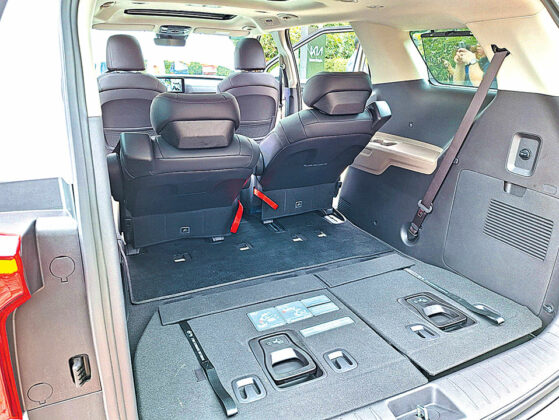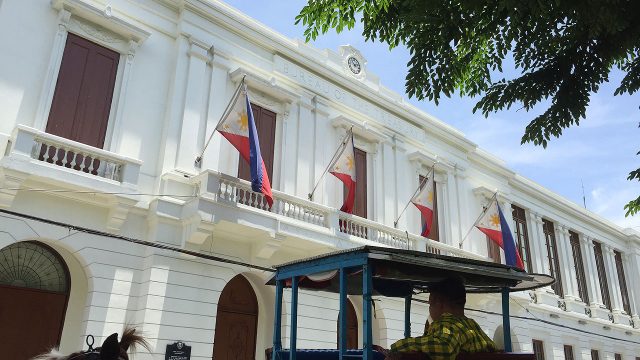‘Cars should fit into our lives’

Lynk & Co designer Stefan Rosen on what shapes the future of mobility
IT’S QUITE a treat when we get to meet the designer behind any of the products we really like. I guess it’s fueled by the same desire as wanting to get to know the author of a book, before being able to fully appreciate it. And we enjoyed just that privilege — when “Velocity” got to join an interview panel with Lynk & Co’s car designer for many years, Stefan Rosen.
Rosen’s background is rooted in Scandinavian design. From this, he brings a minimalist yet bold approach to automotive styling. His work with Lynk & Co focuses on merging functionality with a modern aesthetic — aligning the brand’s vehicles with the evolving demands of urban mobility. His designs are not just about form but also about rethinking how drivers interact with their vehicles — emphasizing connectivity, sustainability, and modern technology. His commitment to pushing the boundaries of traditional car design presents him as a standout talent in the global automotive industry.
During our interview, Stefan shared how he was most fond of being part of a team that was right in the thick of creating a new brand. “It feels personal to me,” he shared, and went on to describe a car as “almost like a living creature… because it moves, it shifts weight, it has a personality. And it creates a personal connection with people.”
He also talked about the creative process of designing cars. Stefan explained how he always starts with a sketch created traditionally with pen and paper. These days, designers get to build them into more complex models through computer simulations before building the actual prototypes. But equally as important in finalizing a new design is to make sure that the car will fit into people’s lives. And for that part, the designer believes in talking to people… a lot.
Interestingly, Stefan also pointed out that his favorite source of inspiration is movies, and that his favorite sci-fi movie of all time is the Alien series — because he simply loves its 1970s look with the big switches and mechanicals; how it contrasts with how advanced the monsters are; so much that the alien is playfully referred to as “the perfect organism.”
When asked about what’s next for Lynk & Co, Stefan talked about going electric and touched on the trend of fighting size and weight so that smaller and lighter but equally efficient vehicles could be created using less resources. He discussed conceptualizing car designs that make the product more than just a car. For this, he referred to an observation made in China wherein consumers were found spending lots of time aboard their automobiles, but devoting less time to actually driving them! It’s as if cars are now an extension of our personal space. Wouldn’t it be lovely, he said, if you could just spend time inside your car without having emissions?
He also expounded on the company’s efforts to create vehicle interiors that offer something different from the usual shebang, and how Lynk & Co’s new designs are holistic in nature — well-thought of, starting with the name of the car, followed by its looks, and the feeling of it from the inside. Fashion and technology trends are taken into consideration. Even the brand logo is considered a part of the new design.
Finally, when asked about what he thinks might happen to cars in the future, Stefan stated that while some people may still prefer to collect cars, there may also be a growing consumer view of cars being better off as a shared commodity. Perhaps there will be more people who’d rather enjoy mobility without actually having to own a vehicle, he said.
Lynk & Co dealerships have been steadily growing in the Philippines. They have dealerships in Alabang, Angeles, Bulacan, BGC, Quezon Avenue, and soon in Iloilo. The last will be the first Lynk & Co dealership in the Visayas region, and it will rise along the Circumferential Road 1 in Brgy. Pakiad, Oton, Iloilo. The showroom is expected to be operational by the first quarter of 2025, while the full dealership with service bays is expected to be completed by July 2025.
Lynk & Co Philippines has also just recently introduced the 06 Hyper Core+ SUV, which is a new variant of its B-segment SUV that sells for an attractive P1.299 million. It comes with a comprehensive five-year or 150,000-km vehicle warranty (whichever comes first) and two years of free PMS (periodic maintenance service). It is available in Misty Gray, Pearl White, Sonic Green, and Pastel Lilac exterior colors.





















